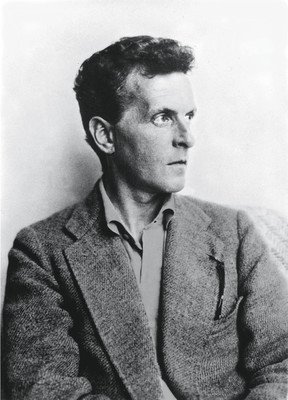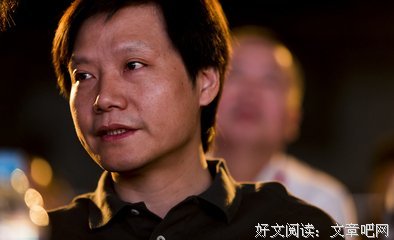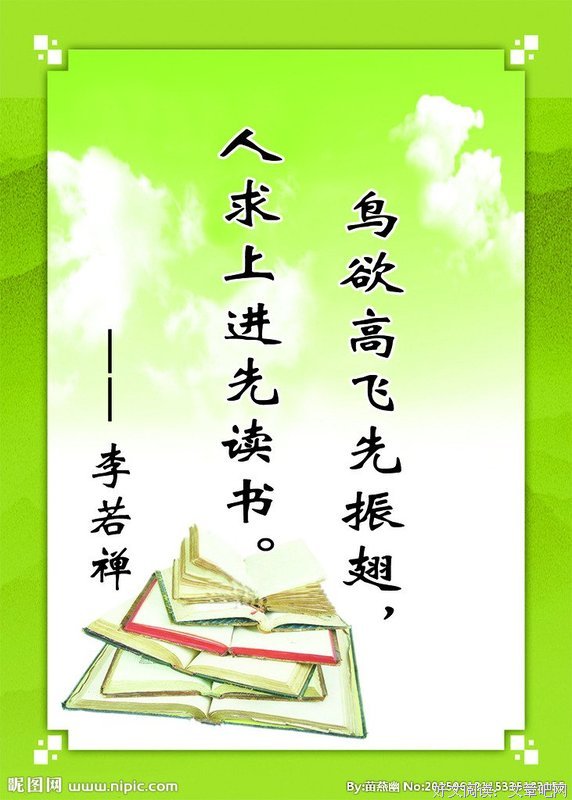
《维特根斯坦》是一部由德里克·贾曼执导,卡尔·约翰逊 / 迈克尔·高夫 / 蒂尔达·斯文顿主演的一部剧情 / 传记 / 历史 / 同性类型的电影,文章吧小编精心整理的一些观众的观后感,希望对大家能有帮助。
《维特根斯坦》观后感(一):这么困难的主题拍成这样不容易
古往今来,就生平来讲能称得上传奇的哲学家不多,苏格拉底是一个,维特根斯坦是一个。
然而除了传奇人生,描写哲学家归根结底是离不开他的思想的。然而用视觉语言表现哲学思想,太难了。很可能,如果你去表达思想,引一大串名句,放在电影里只体现出一点:这人特别深刻。拍到最后,只是个圣徒、天才、怪人的形象,还可以套用到其他思想家头上。
还好WIttgenstein的名言够多,思想和生平十分一致;仅仅展示他的那些故事,也能迷倒一片挣扎在书海中的粉丝。当然,片子里讲课的场景太多了,这也是不得已而为之,非哲学专业的没准看得云里雾里。
本片的视觉语言、服装色彩相当丰富,加分。
要是能还原一些语言游戏就有趣了……可惜导演并没有拍出来……
《维特根斯坦》观后感(二):扁平化的戏剧表达
一开始看这电影的时候,虽然很喜欢小路德维克很萌啊,也很喜欢这种戏剧风格,但是同时感到遗憾:要是能做成舞台剧现场观看该多好啊。
一个老师曾经跟我们说,他说比起电影,他更喜欢话剧,因为电影限制住了你了视角,而话剧给了你更多的自主。
但是后来对于维特根斯坦电影,我不这么想了,因为电影的这种扁平无力感,正好契中了维特根斯坦,正如同《哲学研究》式的表面波澜不惊之下的激情和战栗。这种扁平的姿态是一种全新的戏剧姿态。
那些人,他们以为话剧比电影好,他们只是眷恋于旧时代。今天,屏幕给了我们太多的焦虑和虚无,但是同许多时代一样,今天的丑恶不见得比过去多,但是恶也可以重新成为审美的对象。从这一点上来说,这部90年代的作品是十分先锋的。
尽管维特根斯坦认为现代艺术是堕落的,我不知道他究竟指的哪些东西,因为我知道,在今天,许多打着“实验艺术”的幌子的东西也是十分恶俗。但是他怎么看,也不是很重要。
相对于马克思而言,维特根斯坦更具有弥散性,当他提出数学是一种发明的时候,当然这句话字面上是可以争论的,但却具有极深刻的洞见。其实在44年手稿中马克思就说过,即使一个人不与别人交流,进行纯自然科学的研究,他使用的语言和材料也是社会性的,维特根斯坦实际上将这一条推广了。我们可以看到,在马克思的哲学当中,有一个类比于狭义相对论中在各参考系中速度不变的光的东西,那就是人。因为我现在很久没有练习数学了,因此我的物理越来越不行了,我一直没有学习广义相对论。我有一个猜想,假如将马克思类比于狭义相对论,那么维特根斯坦大概可以类比于广义相对论。
路德维克·维特根斯坦,他是一个放弃了救世的救世主。
The limit of language is the limit of the world. 这句话,太悲剧了。我想起了在战场上大喊amen的维特根斯坦。
我把这句话注成了:二律背反就是我们的有限性。它是我上个学期上西哲史下上康德的时候想出来的,现在觉得和维特根斯坦无比的契合。当然,从字面上看,the limit of language is the limit of the world 看起来很荒谬,因为这句话讲得太快了,因为这个 世界 ,不是世界本身(假如有那种东西的话),而是向我们展开的那个世界,你可以联想一下马克思的人化自然,是我们与他人共有的那个世界。
(更正:《逻辑哲学论》中的原话是 Die Grenzen meiner Sprache bedeuten die Grenzen meiner Welt. 这个bedeuten在此处用的极为恰当。)
曾经梦想当工程师的路德维克,曾经在高中教室最后一排拼命刷物理题目的我。我在少年时代已经明白了数学世界的无能为力,大概因为我是这个时代的人。仅仅是为了捋顺像我这样的强迫症炸开的毛。
他的逻辑世界的破灭,他最后说我度过了美好的一生。
特别喜欢他身上绑着某个类似于飞行器的画面和他在临终时那个身上绑满气球升天的小路德维克。曾经的人类的某些天真的梦想。
有人说小孩子不像小时候的维特根斯坦,我认为那只是他的一个内在形象,不一定要和历史一一对应。
再者,很明显,维特根斯坦的同性恋倾向和导演是同性恋这件事,和维特根斯坦的哲学明显是有关联的,但这一点是十分隐晦不好言谈的。(因为一旦运用社会历史分析法就会滑向非常没有品位的境地)
另,我不知道是不是演员的原因,电影里的维特根斯坦在某些时候看起来有点像凡高。大概是那种圣徒式光芒。
《维特根斯坦》观后感(三):不食人家烟火的“神人们”之间的情景爆笑喜剧
舞台背景和道具很简约的爆笑情景话剧,但是看似又没有舞台,真人版拼接的人物情景模拟效果加上精选的台词,喜剧效果十分浓厚,当然要在对维特根斯坦的故事有一定的背景知识的情况下才能感受到。此片导演把艰深的话题轻松简约而又相对通俗的在展现在观众面前,对于舞台虚拟消失化的处理,以及简单道具的应用很到位,真是一次伟大的创作。看来庄重贵族绅士的英国人有着一流的讲故事的能力,而这样的优点也体现在今天的BBC的纪录片里面。
里面有个十分可爱且帅气的小正太扮演的童年版的维特根斯坦,会时不时的以“画外音”的方式出现在故事的叙述过程中,有诙谐且点醒我们的效果。
维特根斯坦,在这个严肃的世界里,和谢耳朵一样可爱,但比谢耳朵更偏执却十足理性更具有真实感,当然很重要的原因是因为前者就是真实存在过的人吧。一个在思想上歇斯底里的凡人,一个竭力证明自己的存在的人,证明自己为何存在的人?而这个问题,是大部分人通过涌入人流的方式而终生不作考虑。直到将要逝去,他才对这个问题真正感到释然,我们之外没有疑惑,安心去吧。
只有天才才能容得下天才,傻子从来是看不起天才或者只知道膜拜天才。
《维特根斯坦》观后感(四):生命的价值!他认知欲望的激情和他那触手可及的自由!
“有这样一个故事。有一个年轻人,想把全世界都总结在一个理论里。头脑非常聪明的他终于实现了这个梦想,走一步就看到自己的成果了,真是非常漂亮!没有不完美不正确的世界,延续到地平线的闪闪发光的覆盖薄冰的原野。年青人决定要自己探究自己的世界,刚刚迈出步子的他就向后仰倒在了地上。忘记了冰面是纯洁无瑕的,没有任何污点,也没有摩擦,所以无法行走。年青人坐在那里哭了起来,但是随着年龄的增长,他渐渐明白了,粗糙并不是缺点,正是粗糙使这个世界活动起来。他想跳起来,散布在地面的东西和语言是肮脏的,没有定性的。聪明的老年人,领悟到这是理所当然的。但是他心中某处还是迷恋着冰原,在那里一切都是辉煌纯粹的,粗造的地面虽然好,他却住不了。于是,他就在地面和冰原之间,在哪一边都住得不安稳,这就是他悲哀的根源。” ——选自电影《维特根斯坦》
如果真的存在一个上帝,创造了这一切,那么这位可爱的天才一定来自这样一个地方,那里的所有事物都具备与我们这个世界的所有事物绝对相反的本质,那里一丝一毫都必定完美并永恒。唯有如此,他才会因不满足那里而致力于对它的完全毁灭,而后创造出我们现在所置身的世界,完美以及永恒几乎已经是可以确定为是不存在的,若存在也只存在于上帝的记忆里。
为什么?
因为我们就是如此创造出上帝的。
欲望的毫无节制是人类最根本的无知,而欲望即是对自我和世界的永不满足,对生命的盲目反抗,对自身命运的畏惧和逃避。一面渴望着,一面堕落着,灵魂这最无助的漫游者,他从没有一个真正的目的,也不知自己的根源,时而沉默时而喧嚣,无从表达也因此不能被真正了解。一开始拥有自己,渐渐拥有整个世界但又失去了自己,他既不满足得到也不想失去,故此他的内心充满无尽的争斗。那些真正在追求真理的人,只有舍弃这种追求,即舍弃这无知的根源:欲望,才有可能在这荒诞的一生中确定自身存在的价值。他必须知道人的愚蠢是不知道什么是正确的,什么重要,而且大多数人也不知这是人必须知道的。无聊的人类在欲望之力的推动下唯一明白的就是勇敢地去热爱自己没有以及失去的一切,无所谓任何代价,无所谓是非,人所没有的变成了人的理想,事实和真理都不重要,重要的是没有的,因此人所拥有的就变成了不重要的。他可以死却不可以作为自己活着,因此生命的一切就只剩下对生命的毁灭直到造出一个极致对立与我们所在这个世界的另一个全新的世界,我们没有的世界,或者说没有我们的世界!我们所没有的究竟是什么?就是没有我们。
该死,这样看起来上帝与人又有什么不同?几乎是同一种东西,或者说这种东西的极端表现。这也同时意味着 ,创造者无法创造出脱离自身特质的任何事物。而创造俨然只是生命的一种表达。
试想一下没有追求的生命,也不会再有任何可以限制住他的事物,他没有让一个鲜活的生命腐败在人类对人类的毁灭与无视之中,没有懦弱和欺骗,一切都是顽强和真实的。人生是一次体验却不是一次抢夺,不在于得到在于理解,征服心中那时刻觉醒的恶魔,哪怕穷尽身体里最后的能量,也要向上,决不耽溺或妥协于无知的深渊。
生命的价值!他认知欲望的激情和他那触手可及的自由!
我的微信:love18441015(喜欢思考的可以一起探讨…)
《维特根斯坦》观后感(五):让德里克·贾曼告诉你谁是维特跟斯坦?
电影从维特跟斯坦幼年谈起,最后到死亡结束,叙述了他从前期思想到后期思想的转变,以及这转变所带来的内心的孤独和空虚。维特根斯坦的思想以及内心感触在影片中都有恰当的表现。
粗糙的画面,黑暗的背景;角色浓艳的装束,夸张的动作;繁多的隐喻,杂乱的意象;主角神经质的语气,僵硬的肢体动作...压抑的气氛营造的很好,但是却一点也不深沉。
作为观看者,很难静下心去品味其中的内涵,换句话说,观看者正被维特根斯坦一生的思想所践踏,被导演恶俗的表现手法所强 奸。影片中维特根斯坦说自己不是一个模范,但是在这部电影却把维特根斯坦当作了一个模范让他在屏幕上招摇,在观者心中肆虐——维特跟斯坦只是导演手中的木偶。
哲学充斥着整部影片,失去其本真意义,变得神秘莫测,吊人胃口。看似是将哲学艺术化了,而其实在这里哲学不过是制作电影的工具。导演正是这样卖弄着学识,撩拨着哲学,向你们述说到底谁是维特根斯坦。这是对维特根斯坦的侮辱,对哲学的侮辱;同样也是对电影和观众的侮辱
《维特根斯坦》观后感(六):Ludwig Wittgenstein from Stanford Encyclopedia of Philosophy
Considered by some to be the greatest philosopher of the 20th century, Ludwig Wittgenstein played a central, if controversial, role in 20th-century analytic philosophy. He continues to influence current philosophical thought in topics as diverse as logic and language, perception and intention, ethics and religion, aesthetics and culture. Originally, there were two commonly recognized stages of Wittgenstein"s thought—the early and the later—both of which were taken to be pivotal in their respective periods. In more recent scholarship, this division has been questioned: some interpreters have claimed a unity between all stages of his thought, while others talk of a more nuanced division, adding stages such as the middle Wittgenstein and the third Wittgenstein. Still, it is commonly acknowledged that the early Wittgenstein is epitomized in his Tractatus Logico-Philosophicus. By showing the application of modern logic to metaphysics, via language, he provided new insights into the relations between world, thought and language and thereby into the nature of philosophy. It is the later Wittgenstein, mostly recognized in the Philosophical Investigations, who took the more revolutionary step in critiquing all of traditional philosophy including its climax in his own early work. The nature of his new philosophy is heralded as anti-systematic through and through, yet still conducive to genuine philosophical understanding of traditional problems.
《维特根斯坦》观后感(七):Notes
If people did not sometimes do silly things,nothing intelligent would ever get done.
In art, it is hard to say anything as good as saying nothing.
One must understand, or die..
When two principles meet and cannot be reconciled one another,then each calls the other fool or heresy.
We must improve ourselves. That"s all we can do to better the world.
To imagine a language is to imagine a form of life.
We imagine the meaning of what you say as something queer, mysterious, hidden from view.But nothing is hidden. Everything is opened up to view.
hilosophy hunts for the essence of meaning.But There Is No Such Thing !
It is the philosophers who muddy the water.
When you want to know the meaning of words, don"t look at the side of yourself.
hilosophy is just a byproduct of misunderstanding language.
The limit of my language is the limits of my world. We keep running against the wall of our cages.
(Wittgenstein wants to do some manual labor in Soviet Union.)
-It is absolutely out of the question.The one thing that is not in short of in Soviet Union is unskilled labor.
(Russel is talking about Johnny.)
-You"re forcing your own self-hatred onto their son.(Johnny"s parents are both labors.)
-It"s my business to stop you from infecting too many young men.
-All upper crust idealize to common folks.
alvation is the only thing that concerns me.And I know we are not here to have a good time.
hilosophy is a sickness of the mind.
Living in a world such a love is illegal, to live open and honest is absolutely impossible.
The soul is the prisoner of his own body. And it"s locked out from contact with others by the walls of their bodies.
I want to get ride of this picture. We are what we are only because we share a common language and common forms of life.
Do You Understand What I"m Saying ?
What I meant was that I tried to show the sort of things that philosophy could say, and these aren"t really important. What"s much more important is all the things it can"t articulate.
hilosopher in no sense can question them.Philosophy leaves everything exactly what it is.
We learn to use words because we belong to a culture,a form of life, a practical way of doing things.…All this is public affair.
Don"t be afraid of dying. It is death that give life meaning and shape.
-I"d quite like to have composed a philosophy work which consists entirely of jokes.
-Why didn"t you?
-Sadly I didn"t have a sense of humor.
(Thinks to @queeniepku, I needn"t to type in all these words!:)
Let me tell you a little story. There was once a young man who dreamed of reducing the world to pure logic. Because he was a very clever young man, he actually managed to do it. And when he"d finished his work, he stood back and admired it. It was beautiful. A world purged of imperfection and indeterminacy. Countless acres of gleaming ice stretching to the horizon. So the clever young man looked around the world he had created, and decided to explore it. He took one step forward and fell flat on his back. You see, he had forgotten about friction. The ice was smooth and level and stainless, but you couldn"t walk there. So the clever young man sat down and wept bitter tears.
ut as he grew into a wise old man, he came to understand that roughness and ambiguity aren"t imperfections. They"re what make the world turn. He wanted to run and dance. And the words and things scattered upon this ground were all battered and tarnished and ambiguous, and the wise old man saw that that was the way things were. But something in him was still homesick for the ice, where everything was radiant and absolute and relentless. Though he had come to like the idea of the rough ground, he couldn"t bring himself to live there.
o now he was marooned between earth and ice, at home in neither. And this was the cause of all his grief.
(At last,here comes Mr,Green.)
-Solution to the riddle of life and space and time lies out of space and time.But as you know and as I know, there is no riddles.
《维特根斯坦》观后感(八):哲学终结者的舞台剧
本片拍摄方式很有趣,用舞台剧的方式来讲故事,这样的好处是可以屏蔽掉不需要的背景和路人,让观影专注在人物本身。狗镇和夜巡中也用了这个技巧,但都没有维特根斯坦用的绝对。
片子的一大挑战就是如何讲好维特根斯坦,维也纳富商的叛逆儿子,哲学的终结者,生生将一代天才罗素变成自己注脚的剑桥子弟。维特根斯坦的主要思想,就是交流这件事受到了人类沟通和认知手段的限制,致使认识他人这件事变得不可能。而本片却做到了,利用戏剧舞台上的比喻和反差效果,突破了文字的束缚,让人们用另一种方式认知。这件事本身太伟大了,足以证明电影艺术的重要性。同类型的电影还有阿涅斯的海滩等,但都不及本片的伟大。
令人印象最深刻的就是维特根斯坦带着罗素夫妇假装银河系,绕着太阳跑,妄图“用石头的想法看石头”,这个行为太东方了
《维特根斯坦》观后感(九):Derek Jarman’s Personal Narrative
我很少看把电影看第二遍……但这部传记片实在是太有趣了。
对于大众来说为什么牛逼:
成本低,概念高。演员也都选得好
而导演Jarman也是很下功夫。当时几近失明的他,把维老他的人和他的思想都读透了。改写剧本时Jarman大胆想象,写成了这么一部轻松诙谐加自我调侃的同志哲人传记片。我就喜欢这种先锋的自我解读,而不是循规蹈矩走传统传记路线。
对于我个人来说为什么牛逼:
感情呈现的起乘转折的节奏把握得特别好。不乏感人的台词,尤其是结尾凯恩斯的那段独白比喻,听得心都融化了。
我和片中偏执地寻找『私人语言』维老有同感。时常在个人的孤独感中纠结与人交流时所遇到的困难。
他认为 解决这种孤独 尤其是哲人的孤独(brooding over its private experience) 的方式就是寻找公共语言
而完善这种语言的方式就是让所有人的逻辑体系都是理性的、一致的。
当有人对他做侮辱手势的时候,他开始意识到,人类的语言不可能完美。
他执着而天真 聪明而钻牛角尖 不爱都不行。
好吧其实是为了贴作业的,调研贾曼的两部电影
中心论点在第一段。。关于电影中的同志题材和场景设置
Derek Jarman’s Personal Narrative—Exploring Ludwig Wittgenstein and Michelangelo Caravaggio’s Brilliance and Queer Identities
As one of the best-known British queer directors, Derek Jarman produced several unique biopics of talented men tortured by their repressed homosexuality. Notably, Jarman started his career in feature film by working with Ken Russell, a director who reinvented the artist biopic by “introducing startling fantasy sequences and ostentatious camera movements.” Jarman continued Russell’s revolt against conventional realist representation of historical figures. Also using biopics as a form of documentation, Jarman has sought to reenact experience and thereby reconstruct affective relations. He identifies with brilliant queer men who are often too radical for their times. By portraying queer figures, Jarman interprets art and philosophy as well as repressed emotions and loneliness of queer men. Even during the conservative periods, Jarman’s nuanced films carried many provocative themes that were not only political but also highly personal. Caravaggio (1986) and Wittgenstein (1993) exemplify these aspects of Jarman’s individualistic, subjective approach. Jarman admits to strongly identifying with Wittgenstein: “I have much of Ludwig in me. Not in my work, but in my life.” Jarman has also stated in interviews that his artistic dilemmas are similar to those experienced by Caravaggio. This research paper attempts to capture the richness of Jarman"s personal relationship with these two figures by discussing both films’ use of mise-en-scene and their thematic concern with queer identity.
Jarman engages with the lives of Wittgenstein and Caravaggio by referencing and paying homage to their work on a theoretical level. A painter and former set designer, Jarman emphasizes the use of mise-en-scene as substitute for literal narrative. In Jarman"s films, staging and visual imagery are the most important qualities, while “narrative takes second place". While the lack of emphasis on logical narrative granted him more space to experiment, viewers with little knowledge of the characters are often confused. Jarman concentrates on constructing the plot around Caravaggio"s paintings rather than his life and times. Critics have pointed out the absence of a clear narrative in Caravaggio. The characters and their relations to Caravaggio are unclear and sometimes misleading. Many supporting characters do not have presence in the plot that was fully distinct from their respective paintings. Yet Jarman believed he had to establish a unique perspective in order to capture Caravaggio’s dramatic “Hollywood template” life in a 90-minute film without resorting to clichés. Narrative ambiguity allows Jarman to “recreate many details of [his] life and, bridging the gap of centuries and cultures, to exchange a camera with a brush.” He interweaves the paintings with the plot with a painstakingly reworked script that involved 16 rewrites, as well as magnificent tableaux vivant production sets. Jarman focuses on Caravaggio’s emotions, sexuality, dreams and events surrounding the creation of his paintings, redefining the genre of the artist biopic. The paintings drive the narrative, and the consciousness depicted is not that of independently conceived characters but that of the artist himself, Jarman-Caravaggio.
As a lifelong painter, Jarman appreciates the narrative power of mise-en-scene and highlights it in the set designs for both films. Jarman is fascinated by Caravaggio’s use of chiaroscuro to create the illusion of depth. He praised Caravaggio for inventing cinematic light and the noir style shadowed backgrounds. Jarman pays homage to this technique through tightly controlled lighting effects. The tone and shade of the walls and skin color convey more about the scene than the script. In most scenes, Jarman meticulously replicates Caravaggio’s light sources, which usually come from the left and therefore elicits stronger responses from the viewers. Jarman attempts to show that the chiaroscuro is effective to capture intense emotions not only on canvas but also in film. He pays homage to Caravaggio by employing light and emphasizes the timelessness of classic art techniques.
While Jarman painted cinema like the artist Caravaggio, he also philosophized it, as expressed in the mise-en-scene of Wittgenstein. Jarman portrays Wittgenstein’s general estrangement from a painfully foreign world as a result of both his abstract philosophy and his difficulties accepting his sexuality. Jarman shows a world that appears absurd from Wittgenstein’s perspective: the highly stylized acting and flamboyant costumes of other characters contrast with Wittgenstein’s naturalistic acting and gray tweed jacket. Wittgenstein questions himself throughout the film: “How can I be a logician before I am a human being? The most important thing is to settle accounts with myself!” He travels across Europe, fighting in the Great War, teaching in a rural school, and escaping to Ireland or Norway to familiarize himself with the strange world, yet its meaning is still “problematic.” Wittgenstein, troubled by his sexuality, also wished to live an ethical life guided by strict logic. Yet this longing for perfection is disrupted by the messiness of life and the fickleness of passions.
Jarman places symbolic visuals in the biopic, which remind sophisticated audiences of “Wittgenstein’s epigrammatic style” of writing. Lady Ottoline paints Bertrand Russell on canvas as a red monochrome. When he wrote the script, Jarman also tried to understand Wittgenstein’s personal life by reading his books. Remarks on Colour provided him with cinematic context to relate to Wittgenstein’s ideas: “Remarks on Colour was a path for me back to the Tractatus [Logico-Philosophicus].” Furthermore, Jarman’s schematic use of color contrasts between the repression of private feelings and the expression of straightforward colors. "The black annihilates the decorative and concentrates so my characters shine in it like red dwarfs—and green giants. Yellow lines and blue stars”, Jarman references the schematic use of colors in Wittgenstein poetically. Jarman later wrote an entire book—Chroma— to show how colors are solely products of human interaction. In Wittgenstein’s words: “I think that it is worthless and of no use whatsoever for the understanding of painting to speak of the characteristics of the individual colours.” Through referencing Wittgenstein’s ideas on colors in the mise-en-scene as well as script text, Jarman pays homage to the philosopher. Jarman also successfully uses film medium to explore abstract theories and overcomes limitations of language.
Jarman engages with Wittgenstein and Caravaggio not only on a theoretical level but also reads into their personal struggles with homosexuality. Similar to abstract theories, Jarman’s Wittgenstein believed that homosexuality is an area that restricts language as a mode of expression. “Whereof one cannot speak, thereof one must be silent,” Wittgenstein once wrote. In Jarman’s dialogue and cinematography, Wittgenstein"s struggles to come to terms with his own philosophical ideas were inseparable from his attitude towards his sexuality. In one scene, three cyclists dressed in anachronistic jumpsuits abuse him with homophobic slurs and the insulting V-sign. Wittgenstein is flabbergasted and realizes there is no “logical structure” in the V-sign – the main argument of his first book. He plans to commit suicide but then rethinks his entire philosophy of language, completing his magnum opus Philosophical Investigations. Wittgenstein is confused by the logic of a curse, but Jarman sets the scene to suggest that Wittgenstein is confounded by homophobia. Jarman explains that Wittgenstein found a black hole in the logic, “for [the picture of Queer] there was no language.” Later, Bertrand Russell is infuriated after Wittgenstein convinces his student Johnny to work and drives him away from philosophy. Russell criticizes Wittgenstein for idealizing the common folk and “infecting too many young men” with his thought experiments. Jarman hints at Wittgenstein’s homosexual relationships with students through these double entendres. Wittgenstein"s euphemisms, too, reflect his embarrassment concerning these relationships: He has “known” Johnny three times. Following this scene, Jarman places the mentally tormented Wittgenstein in a suspended cage. Wittgenstein ponders upon his relationships with his university and exclaims painfully: “Philosophy is the sickness of the mind. I mustn’t infect too many young men… living in a world where such a love is illegal and trying to live openly and honestly is a complete contradiction.” John Maynard Keynes, also clearly homosexual in the film, consoles Wittgenstein: “If you’d just allow yourself to be a little more sinful, you’d stand a chance of salvation.” Both Wittgenstein’s sexuality and philosophy alienates him from the real world. Jarman portrays a Wittgenstein who finds it difficult to distinguish between his philosophy and sexual passions.
imilarly, Jarman regards Caravaggio as the most homosexual of painters, based on his paintings rather than his biography. Jarman notes that Caravaggio paints his own face staring from the back of the crowd in The Martyrdom of Saint Matthew. He hypothesizes that “[Caravaggio] gazes wistfully at the hero slaying the saint. It is a look no one can understand unless he has stood till 5 a.m. in a gay bar hoping to be fucked by that hero. The gaze of the passive homosexual at the object of his desire, he waits to be chosen, he cannot make the choice”. Jarman reads Caravaggio"s paintings for insights into his psychology and romantic relationships, and places these readings into his film. Caravaggio suffers creative drought while painting The Martyrdom. He encounters the attractive, masculine yet poor Ranuccio and selects him as a model. Ranuccio, the object of desire, inspires Caravaggio to finish the painting. Caravaggio showers him with gold coins in a suggestive fashion and also delivers one of the coins mouth to mouth. At the final stage, Caravaggio gazes intensely at Ranuccio still posed as the Martyr, forming a tableau vivant of the painting. His role as the artist desiring for Caravaggio and man yearning for St. Matthew in the painting is blurred. Caravaggio says in a voiceover, “I will seek him, whom my soul loves. I sought him, but found him not.” Jarman depicts Caravaggio as having romantic yet passive sentiments for the undesirable and shows this through ingenious mise-en-scene.
Elsewhere, Jarman portrays Caravaggio’s passivity as a product of the hypocrisy of the Roman Catholic establishment’s homophobia. He reads in the same painting “pernicious self-hatred [homosexuals] fostered among themselves… which is the key to Caravaggio’s life and destruction—it’s written all over the painting.” Jarman also identifies many of Caravaggio’s paintings as claustrophobic. Believing that there is a connection between Caravaggio’s style and his state of mind, Jarman films all of the scenes in studio with claustrophobic environments to suggest Caravaggio’s suffocation in a homophobic society. There is only one exterior scene in Caravaggio, in which Ranuccio and Lena are engaging in heterosexual foreplay. The restriction of space is emphasized as Caravaggio recounts the open spaces of the ocean or grasslands on his deathbed, yet the film includes not a single shot of the sky.
In Wittgenstein, Jarman further restricts the mise-en-scene space and uses nothing but a black background. Yet Wittgenstein does not experience the engulfing black as simply a form of claustrophobia. By using the black drape, Jarman was not only able to film the documentary on a minimal budget, but could also suggest that “the historicising attitude to biopic is totally irrelevant.” Jarman, who sought to make a philosophical film, said that “to redefine film, like language, needs a leap—in this case, the black drapes [defy] the narrative without junking it”. Time, space, and color are happening, juxtaposing an eternal and persistent void. Wittgenstein’s biographer Ray Monk lauded this approach in a review, saying that the black background embodies Wittgenstein’s “ahistorical, existential style of philosophizing and creates the entirely apposite impression that this is a story that is happening, not in any particular place, but rather in somebody’s—Wittgenstein’s—mind.” Eventually, on his deathbed, as Wittgenstein accepts his queer desires in an imperfect world, the child version of him rises out of the black drapes and flies up to the sky (a backdrop) on aeronautic wings. Wittgenstein leaves the alienating world that has been portrayed thus far in the film.
Jarmanesque props are also an important mise-en-scene element. Jarman references Leonardo da Vinci’s engineering drawings by giving Wittgenstein kite wings and having him hold lawn sprinklers in his hands. The sprinklers" jets of water resemble the spinning propellers of a plane. Jarman’s anachronistic choice of props was inspired by the props in Caravaggio’s paintings. In Penitent Magdelane, only the pearls and bottle of perfume indicate that the subject is Mary Magdalene. Her identity is otherwise unclear because the model is a prostitute dressed in 16th century clothing. Caravaggio’s mix of historical and contemporary objects suggests a connection between the historical subject and the viewer. Like the props in Caravaggio’s paintings, those in Jarman’s films suggest that history exists within the present and is embodied by contemporary models and objects. In one scene of Caravaggio, the aristocratic banker pompously fiddles with an electronic calculator that shows the timeless relationship between art and commerce. The vicious art critic attacks Caravaggio’s paintings and sexuality using a typewriter, perhaps referring to contemporary Tories that attacked Jarman personally in Sunday Times. The pope jeers at Caravaggio with a modern term “you little bugger” when he claims that art only helps the status quo. Through anachronistic props, Jarman shows the timelessness of artists’ tension with the establishment.
Jarman engages with Caravaggio and Wittgenstein’s theoretical ideas as well as personal dilemmas to show that they are not only brilliant but also troubled by their queer sexuality. Equipped with mise-en-scene elements such as lighting techniques, schematic colors and anachronistic props incorporated in his meticulously written script, Jarman directed nuanced films such as Wittegenstein and Caravaggio that explore many provocative themes during conservative eras. As an artist, Jarman feels responsible to show those details and nuances that cannot yet be fitted into a theoretically coherent framework, where the “attrition between private and public worlds” is felt strongest. Jarman used cinema “to express his beliefs, his dreams, his emotions, his ideologies, his needs. That is the difference between the artist and the technician who both make films.” Combining extraordinary vision, intellect and effort, he effectively conveyed his personal and theoretical readings of the two figures’ queer identities in Caravaggio and Wittgenstein.
ibliography
eristain, Gabriel. Caravaggio (DVD audio commentary). Dir. Derek Jarman. Cinevista, 1986. DVD. Zeitgeist Films. 2008.
Clark, James. "Jarman"s Wittgenstein." Jim"s Reviews. http://jclarkmedia.com/jarman/jarman10.html (accessed December 5, 2010).
Ellis, Jim. Derek Jarman"s Angelic Conversations. Minneapolis: University of Minnesota Press, 2009.
Fox, Sharon. A perceptual basis for the lighting of Caravaggio"s faces. Journal of Vision. August 1, 2004 vol. 4 no. 8 article 215. <http://www.journalofvision.org/content/4/8/215.abstract>
Jarman, Derek. Caravaggio. Thames and Hudson, London, 1986. 44.
Jarman, Derek. Dancing Ledge. Quartet Books, London, 1984.
Jarman, Derek. "This is Not a Film of Ludwig Wittgenstein." In Wittgenstein: the Terry Eagleton script, the Derek Jarman film. London: British Film Institute, 1993. 63-67.
Jarman, Derek, and Roger Wollen. Derek Jarman: a portrait. London: Thames And Hudson, 1996.
Monk, Ray. ‘Between Earth and Ice: Derek Jarman’s Film of the life of Wittgenstein’. In The Times Literary Supplement, 19 March 1993.
ash, Mark. "Innocence and of Experience," Afterimage 12, Autumn 1985. 30.
encak, William. “Caravaggio and the Italian Renaissance” and “Wittgenstein: The Grey Flame and the Early Twentieth Century.” In The films of Derek Jarman. Jefferson, N.C.: McFarland & Co., 2002. 70-84, 108-119.
Wittgenstein, Ludwig. Remarks on Colour. Oxford: Blackwell, 1977.
Wymer, Rowland. Derek Jarman. Manchester: Manchester University Press, 2005.
Appendix
Appendix 1: Michelangelo Caravaggio’s The Martyrdom of Saint Matthew.
Appendix 2: Wittgenstein, the da Vinci design, and sprinklers. Wittgenstein
Appendix 3: Caravaggio’s Penitent Magdelane
豆瓣Appendix 4:写着两部片儿的起因
最近又有新的电影paper要写 8-10p 随便什么topic都行
我苦思冥想数日 从伍迪艾伦到wes anderson,从青年文化想到记者类电影,都因为各种原因被我自己一一否决。(太平庸 太日常 被说烂了 我已经知道太多有偏见的,etc)(选research电影难度在于,又要喜欢研究对象,又不能太喜欢——否则你没办法置身于高处去评判!!比如wes anderson……)
昨天随意浏览豆瓣电影的时候看到以前打5星的《维特根斯坦因》 正好里面很多我没理解的概念 同时觉得很牛逼 于是come up with the rough thesis:When Jarman narrates Ludwig Wittgenstein"s life in the film, how does is the director incorporating the philosopher’s ideas on language?
随后让季先生帮我借了N本关于维叔叔和他理论的书……爽~~
今天去找老师的时候 他听到我选择这部电影时就笑出来了
“我为什么笑啊,其实我应该为你高兴才对嘛,只不过我是太久以前看的了(刚出的时候老师就看了……),所以觉得又惊又喜!”持续表达自己的惊讶,“What a surprising choice!You have an interest in philosophy?” 他没想到我对哲学还有兴趣
我解释了一番thesis,老师又问我为什么想处这个的 我说 因为一直觉得哲人的思想与他们的真实生活之间的联系很微妙。老师质问,什么是‘真实’?我说,想法与生活态度毕竟还是两回事。 他说,嗯确实,随即开始自言自语“电影能体现出image"s immediacy”什么的,我也顺手记下来了
建议:1 don"t try to become a master on wittgenstein"s ideas. 很多人花一辈子都没整明白
2 focus on the text itself, don"t be too absorbed with w"s thoughts
说不定要拿这个作为主体,与《蓝》、《Jubilee》的风格做一些联系(“Jubilee is a very accessible film。你对朋克文化感兴趣吗?里面有所涉及”“嗯,有的”)(我居然说得这么淡定)
他也非常喜欢Jarman,把他与queer vision联系起来,因为同性恋男导们其实都一种独特的表达方式,虽然往往与同性恋这个主题不是很相关
“You are such an unusual student!在我看来,你对抽象的想法这么感兴趣,你以后应该很喜欢电影理论的。可惜啊~你不在我下学期的queer vision课上~我们要讨论帕索里尼啊~以及他对天主教的各种奇怪见解”
“帕索里尼,是拍索多玛的对吧?”
“对”
“嗯。。确实会很有意思呢。话说你看戏剧作品《马拉/萨德》了吗?”
“没有!我本应该去看的!悔恨啊!我消息太闭塞了;以后一定要找到获取这些信息的渠道!”
总之跟电影老师每次谈话都很欢乐很活跃~~虽然我们两个人都有点shy~
《维特根斯坦》观后感(十):我们永远无法理解彼此
大概四年前,有一次我和一位正在准备考研的同学上自习回来,在要走进寝室公寓楼的时候,看见玻璃大门上映出的我的影子,隐约模糊,然后心里突然一阵阵悲哀袭来,很难受,觉得我和周遭的环境突然分离了:周围声音越来越小,我和周围的人,水泥地面,台阶,大楼,杨树,砖墙,天空等等像宇宙中的星体一样,发生着哈勃望远镜观察到的那种膨胀——所有的存在和所有的存在都在飞快地远离着对方,距离越远速度越快。那阴郁深沉的悲哀是源于一个人明白了与这个世界的沟通是不可能的后产生的巨大的失落。
当时,我正在和这位同学争论一件事情,面红耳赤,各自互不相让,当发现与环境的沟通出现挫折的时候,这种淤积的感受却阴差阳错的让我认识到了语言的极限。语言的极限和本质正是Wittgenstein所研究追寻的。
一个人(指独立的思想),和这个宇宙中其他的存在,不会发生实质的交流和沟通,经验建立起来的认知模式,是多样而随机的。一百个人就有一百种认知的模式。那些拥有共同生活经验和语言的人能在一起探讨是件幸福的事情,因为在某种程度上,这增加了交流的效率,弱化了鸡同鸭讲的程度,但要达到真正的沟通与理解,那也是不可能的。另外一种增进交流效率的方式是站在别人的立场上,观察对方的行为模式,并思考他们的语言的指向,试着理解其中的含义。所以,Wittgenstein才会在第一次回到剑桥后上课的时候大吼“有的是语言上的问题、数学上的问题,逻辑的、记号逻辑的问题,宗教的问题,没有正规的哲学的问题,哲学不过是语言误解所产生的副产品而已”。
年轻的Wittgenstein在一战战场上构思了《逻辑哲学论》,以为自己已经解决掉了所谓形而上学的哲学问题。在这里他将哲学问题转化为了语言学问题。后期他又回归哲学,但是仍然发现建构一套表述哲学的语言的不可能,最后转向日常的语言分析,认为“语言来自于日常生活,哲学的本质应该在日常生活中解决”。
语言,还是语言,我们每天讲的语言。它太日常太普通以至于被我们这些无毛两足直立高等生物忽略。一个简单词汇的无法解释和定义的无法统一足以打败那些高高在上的各种经院学问。每个词汇要想统一认识需借助于定义来消除歧义,达成认识一致,但这样的话,每一个词汇需要其他词汇去定义阐释,于是语言的解释就陷入了无限的在语言系统中的循环,永远没有尽头。
人的精神世界广阔而无垠,语言在其面前显得几乎是可以统计清楚的。语言对人精神世界的表现完全无法胜任,捉襟见肘。而现实是所有讨论都离不开语言这个半成品,往往探讨要么陷入完全的对牛弹琴、鸡同鸭讲,要么在一开始就要花更多的精力在对谈论前提的厘清,对不同语意间歧义的消除。但怎么可能能对问题达成统一的认知呢?如果能,那就不需要再继续争论寻求答案了,因为每个人得出的结论这时也会是相同的,不管错与对,只要是一致的,那就是“对”的。
这时候发现,语言和词汇还在那里,不多不少,可怜巴巴。世界没有那么复杂,复杂到需要几个世纪几个世纪的去追寻某一个问题的答案。这个时候就需要抛开问题本身而去探讨推理的假设和推理的方法了。这个世界追寻不到答案,正好说明了,其实本来就不存在问题——起码不存在一个共同认可的问题。(20110530)
http://m.sbbzjw.com/lizhiwenzhang/159348.html
推荐访问:维特根斯坦名言 路德维希·维特根斯坦








